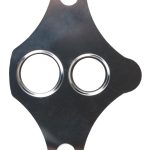Understanding the EGR System
The EGR system, or Exhaust Gas Recirculation system, is a critical component in modern vehicles tasked with emission control. Its primary function is to recirculate a portion of the exhaust gases back into the engine’s intake air, lowering combustion temperatures and effectively reducing nitrogen oxide emissions. This process not only contributes to environmental sustainability but is also essential for vehicles to comply with stringent emission regulations.
A well-functioning EGR system is pivotal for optimal vehicle performance. By lowering combustion temperatures, it prevents engine knocking and enhances fuel efficiency. Proper EGR operation ensures the engine runs smoothly, maintaining power output and prolonging engine life.
Also read : Top Strategies to Maintain Cabin Comfort and Combat Driver Fatigue on Long Road Trips
However, there are common misconceptions surrounding the EGR system. Some believe it hampers performance, as it’s erroneously thought to reduce airflow, thus decreasing power. In reality, a correctly functioning EGR can improve fuel efficiency without sacrificing performance. Routine maintenance, including cleaning or replacing EGR valves, ensures the system functions as intended. Understanding these aspects enables vehicle owners to appreciate the synergy between efficient performance and emissions control, dispelling misconceptions and fostering a positive outlook toward the EGR system’s role in modern vehicles.
Preparing Your EGR System for Maintenance
Before diving into EGR maintenance, it’s crucial to understand the recommended schedule to maintain optimal performance. Generally, the EGR system should undergo maintenance every 50,000 miles. However, this may vary depending on vehicle usage and manufacturer recommendations.
Also to see : Essential Tips for the Safe Installation and Maintenance of Your Vehicle’s Trailer Hitch
Having the right tools and materials is the first step in preparation tips. Essential items include a wrench set, EGR valve cleaner, gaskets, and a diagnostic scanner. These tools will facilitate a thorough inspection and cleaning process.
Detailed Preparation Procedures
-
Locate the EGR Valve: Referring to a vehicle-specific manual will help identify the exact location of the EGR valve.
-
Disconnect the Battery: Safety first! Disconnecting the battery prevents accidental electrical shorts during maintenance.
-
Remove the EGR Valve Properly: Using appropriate wrenches, carefully unscrew the EGR valve from its position. Take note of its orientation for reinstallation.
-
Inspect and Clean: Utilize the EGR valve cleaner to remove carbon deposits. Inspect for any signs of damage or excessive wear.
-
Replace Gaskets if Needed: Check gaskets for deterioration and replace them to ensure a tight seal upon reassembly.
Following these performance optimization steps ensures the EGR system continues to function efficiently, reducing emissions and maintaining engine health.
Best Practices for Sustaining EGR System Performance
Ensuring EGR performance is optimal involves a few key maintenance practices critical for vehicle longevity. Regular cleaning and inspection of the EGR components are necessary. These systems can accumulate soot and carbon deposits over time, impeding efficiency. Regular checks can prevent these build-ups, ensuring the EGR valve and cooler are functioning correctly.
Using quality fuels and additives is equally important. High-grade fuels can reduce the likelihood of clogging and wear within the system. Additives, specially formulated for engine conservation, can further enhance EGR components’ durability, promoting smoother operations.
Monitoring engine performance frequently for signs of EGR issues is vital. Common indicators include reduced fuel efficiency, increased emissions, or unusual engine noises. Prompt attention to these warning signs can prevent further damage and costly repairs.
Maintaining EGR system health not only enhances performance but also prolongs the life of your vehicle. Implementing these practices can result in smoother running engines and contribute to overall reliability. Keep these strategies in mind to safeguard your automotive investments.
Troubleshooting Common EGR System Issues
Modern vehicles rely on EGR systems to reduce emissions. However, understanding how to handle EGR system issues can be perplexing. Knowing how to identify signs of EGR failures is crucial in maintaining car performance.
Recognizing common problems in EGR systems often begins with symptoms such as rough idling and decreased fuel efficiency. These signs hint at potential failures or blockages within the system. A notable indicator is the activation of the check engine light, often signaling EGR malfunction. This requires immediate attention to prevent further damage.
Successful EGR troubleshooting involves employing different diagnostic methods. Utilizing a scan tool can help retrieve error codes and confirm suspected failures in the system. Visual inspections are also beneficial. They help in detecting physical damage or soot accumulation that might be blocking the EGR valve.
Upon diagnosing the issues, exploring repair solutions is essential. Cleaning the clogged EGR valve or replacing faulty parts could resolve most problems. Ensuring regular maintenance helps in preventing severe malfunctions, thereby extending the lifespan of the EGR system. In these scenarios, taking proactive measures ensures vehicle efficacy and emission compliance.
Preventive Measures for EGR System Longevity
Maximising EGR system longevity requires attentive preventive maintenance and informed performance tips. Routine checks are pivotal in keeping the EGR system from unexpected failures. Regular inspections to monitor soot build-up and ensure component integrity should not be overlooked. Addressing minor clogs promptly prevents escalation into severe blockage that could disrupt performance.
Avoiding blockage and damage to the EGR system also entails maintaining a clean engine environment. Optimal combustion reduces soot production, vital in preventing EGR-related issues. Ensuring quality fuel and utilizing proper oil grades contribute substantially. Clean air filters further support efficient operation by reducing particulate ingress into the combustion chamber that could otherwise accumulate in the EGR system.
That said, certain performance tips can augment preventive maintenance. Implementing regular carbon-cleaning treatments effectively deters potential deposits, relieving stress on the EGR system. Drivers should heed any changes in engine performance and respond swiftly to warning indicators that may suggest an EGR malfunction. Maintaining the EGR’s cleanliness and efficiency spares you from costly repairs, ensuring your vehicle runs smoothly for longer.
Visual Guides and Checklists
Understanding the Exhaust Gas Recirculation (EGR) system maintenance can be challenging, but incorporating visual aids can greatly enhance comprehension. These aids help by providing clear images and diagrams that articulate otherwise complex processes. For instance, seeing the layout of the EGR system through a diagram can significantly reduce any maintenance-related guesswork.
For performing EGR system inspections and maintenance, sample checklists serve as invaluable guides. Checklists might include points like:
- Inspecting for carbon buildup
- Checking the EGR valve operation
- Verifying all connection points aren’t leaking
Such EGR checklists can ensure no vital step is overlooked, thereby ensuring the system’s smooth operation.
Certain maintenance guides come highly recommended due to their comprehensive visual resources. These guides often combine detailed schematics with step-by-step tutorials that are easy to follow. Whether it’s detailed instructions on manually cleaning an EGR valve or utilizing digital animations to show the process in action, visual resources empower individuals to perform maintenance confidently and efficiently.
In conclusion, selecting proper maintenance guides that utilize visual aids and include thorough EGR checklists are instrumental in successfully managing your system’s health.
Summary of Key Takeaways
To optimise your vehicle’s performance, it is crucial to understand the importance of the Exhaust Gas Recirculation (EGR) system and how its proper maintenance can significantly enhance efficiency and reduce emissions. Here, we summarise essential tips for successful EGR maintenance.
A well-maintained EGR system prevents carbon deposits, which, if neglected, may lead to reduced engine performance and increased pollution. Notably, regular inspection and cleaning of the EGR valve, an integral component, help maintain optimal functionality. Additionally, recognising signs of EGR malfunction—such as reduced fuel efficiency and erratic idling—should prompt timely intervention.
Staying proactive with EGR system care means extending the overall health of your vehicle, ensuring it runs smoothly with lower emissions. Routine checks, in conjunction with professional evaluations, can significantly mitigate potential issues early on. By adopting these measures, you won’t just prolong the life of your car; you’ll also contribute towards a cleaner environment.
Embracing these key EGR maintenance tips empowers every vehicle owner to enhance performance while being environmentally responsible. In recognising the impact of the EGR system, proactive care becomes an integral aspect of responsible vehicle ownership.











